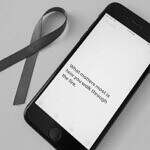Your cart is currently empty!

Maslow’s Hierarchy Of Needs
Psychology students are taught Abraham Maslow’s Hierarchy of Needs. The Hierarchy of Needs is one of the most widely accepted theories of human development. Unlike other theories, Maslow’s hierarchy of needs is based on positive experiences and potential growth. Today, researchers have updated Maslow’s theory but continue to use his model to explain human behavior.
Abraham Maslow
Abraham Maslow was born in 1908, the eldest of seven children. He attended law school but developed an interest in psychology and changed his major. He earned his bachelor’s, master’s, and doctorate degrees in psychology at the University of Wisconsin.
After college, Maslow taught at Brooklyn College. He noticed what he felt were exceptional people and began to study them. This research developed into the basis of Humanistic Psychology. Unlike the prevailing theories at the time, humanistic psychology was a more positive approach to human development.
Maslow disagreed with popular views like:
-
- Freud’s Psychoanalytic Theory
- Skinner’s Behavioral Theory
Maslow felt these theories were too focused on the negative aspects of development and living. He also thought they didn’t account for the creativity and potential he felt all humans have. Maslow’s work in humanistic psychology brought the need for well-being into the forefront of psychology.
The Hierarchy of Needs
The hierarchy of needs is based on the belief that people must fulfill their needs in a specific order. As people learn and grow and a need is met, they can move to the next level of need. The highest level of need is self-actualization, described by Maslow as “the full use and exploitation of talents, capacities, potentialities, etc..”
Review the Five Needs
The hierarchy of needs covers five levels:
-
- Physiological
- Safety
- Love and Belonging
- Self-Esteem
- Self-Actualization
Physiological needs include:
-
- Air
- Water
- Food
- Sleep
- Reproduction
These needs encompass what the human body requires to be alive. Maslow felt that they were the most basic of needs, and people could not grow and develop until these foundational needs were met.
Safety needs include:
-
- Personal Safety
- Health
- Employment
- Social Relationships
Humans have physical, mental, and emotional safety needs. Personal safety includes shelter as well as safe neighborhoods and workplaces. Access to health care and gainful employment are also safety needs that support modern life. People also need to be with other people. The saying “There is strength in numbers” is an example of this safety need.
Love and belonging needs are the needs associated with a more profound sense of connection to other people. This connection can take the form of friendship, family, and intimate relationships. People define themselves by their membership in connected groups and by the strength of other people’s commitment to them. Humans also develop sympathy and empathy by connecting to and caring for others.
Self-esteem needs include:
When you have positive self-esteem, life is just easier. Self-esteem is the need to develop a positive view of oneself. Self-esteem includes feelings of:
-
- Confidence
- Achievement
- Respect from Others
Self-esteem also includes understanding oneself as an individual person who can contribute to a group. The need for self-esteem requires internal motivation, or the ability to start and complete tasks based on a person’s values, desires, and goals.
Self-Actualization includes:
Self-Actualization comes when people understand who they are, how they fit into the world, and find purpose in their lives.
As the highest level of achievement, self-actualization encompasses living a fulfilling and conscientious life. Research shows that the sense of purpose of self-actualization provides better mental and emotional health and longer life.
Updates
In the early 21st century, a study published in the journal Perspectives on Psychological Sciences attempted to update Maslow’s theory. The model proposed had seven levels of need:
-
- Parenting
- Mate Retention
- Mate Acquisition
- Status/Esteem
- Affiliation
- Self-protection
- Immediate Physiological Needs
While some scientists agree with this newer model, many feel it is too focused on the physiological need for reproduction. Unlike Maslow’s theory, which includes self-actualization as part of humanistic psychology, the updated theory discredits self-actualization as a basic human need. Many scientists continue to use Maslow’s model as the foundation for explaining basic human needs.






